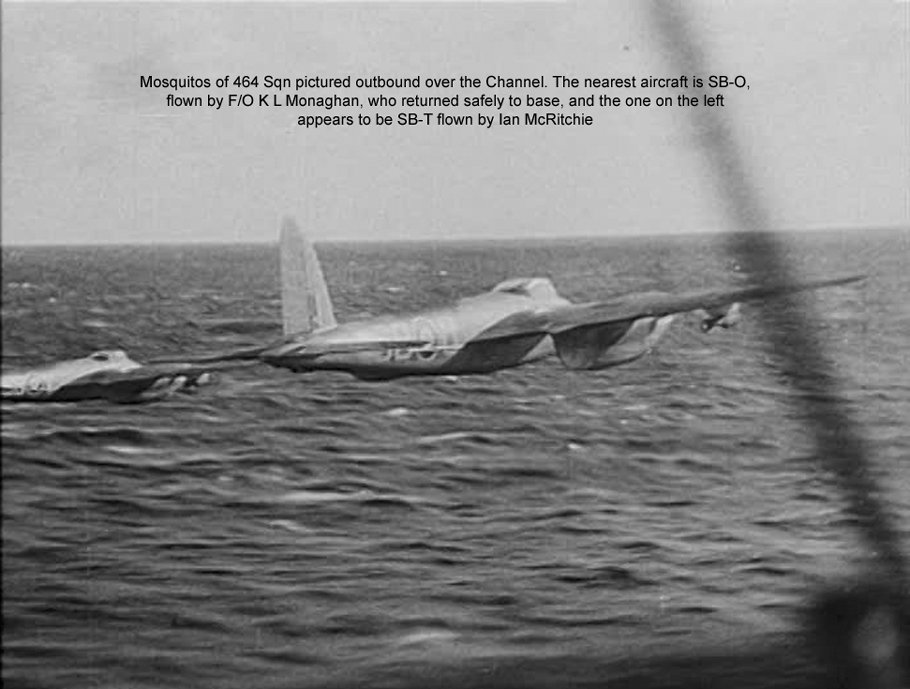
MUCH HAS been written about Operation Jericho, the low-level attack on Amiens prison, so I propose only a brief outline except for the part played by the subject of this story, Sqn Ldr Ian McRitchie. In summary, the French Resistance asked for the prison to be attacked because hundreds of their members, including network leaders, were being held there by the Gestapo, many of them being tortured while awaiting execution.
The brutal explanation was that if the walls could be blown down the prisoners could escape; if they were killed it did not matter because so many were due for execution anyway. The task was entrusted to three Mosquito squadrons, 487 (NZ) 464 (Australia) and 21 (RAF), the last to carry out backup attacks if necessary. Accompanying them would be a Mosquito from the RAF Photographic Unit, which would film the raid from 500ft above them.
The raid would be led by Group Capt. Percy Pickard, one of Bomber Command’s best-known figures following his appearance in Target for Tonight, the Oscar-winning documentary produced in 1941.
Briefing revealed a five-foot square model of the target, which I last saw in the Imperial War Museum many years ago. The route from Hunsdon would be flown below the German radar to ensure surprise and the raid would be at lunchtime to ensure the prisoners would be in their mess hall and the guards in their quarters.
The Kiwis of 487 Sqn would form the first wave and would breach the prison’s 25ft outer walls by placing their bombs into them from below the wall level -- Pickard suggested the crews should approach at 10ft above the ground. Next would be Ian and his 464 Sqn, who were instructed to breach the inner walls of the prison, the most delicate task of all. They would also bomb the German guards’ quarters, two lean-to buildings against the main wall.
Pickard concluded with a terrible choice for the crews. “If I see prisoners escaping I shall radio 21 Squadron to return home. But if none are getting out I shall radio the squadron to bomb the prison. We have been informed that the prisoners would rather be killed by Allied bombs than by German bullets”.
The Mosquito fighter-bomber’s four 20mm cannon projected into the bomb bay, requiring specially shortened casings and fins for its 500lb bombs. Thanks to his expertise as a metallurgist, towards the end of the briefing Ian took Pickard aside to ask if HQ had considered the need for a speed limit when putting bombs into a masonry wall. The bombs were fitted with 11-second delay fuses to allow aircraft to clear the explosion, but at speeds over 240 mph the casings would probably fracture and render the weapon useless.
Pickard immediately passed on this warning to the crews and Ian contributed further advice: “On the runup for the attack, don’t fly in our usual formation, but go line astern so we should be able to get the bombs straight into the guardhouse.”
With the murderous Gestapo setting the timetable, there could be no delay due to the weather and the Mosquitos took off in blizzard conditions -- so bad that their Typhoon escort was unable to rendezvous with them. And as they crossed the French coast the alarm was sounding across the Luftwaffe fighter base at Abbeville, not far from Amiens.
The RAF Film Unit Mosquito accompanied the raid and its spectacular footage of 464 Sqn outbound over the Channel and en route to the target can be seen at